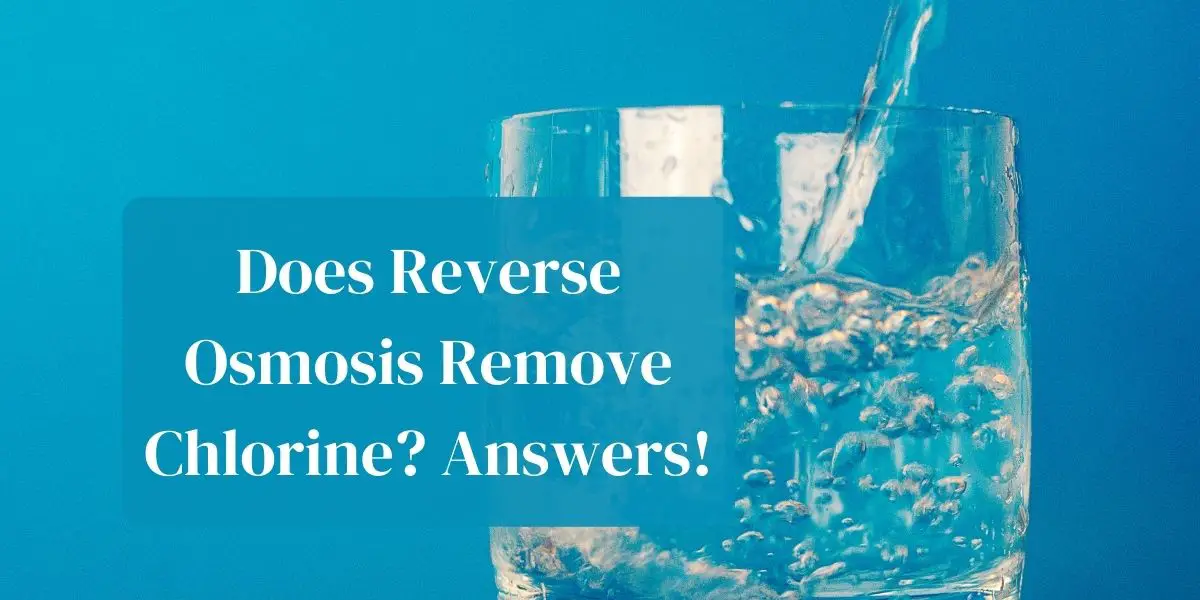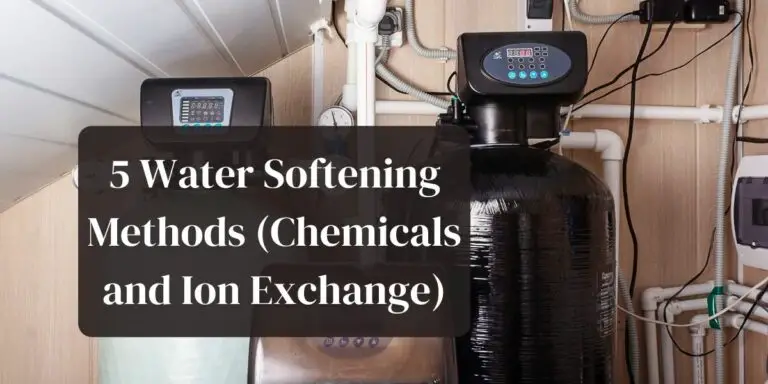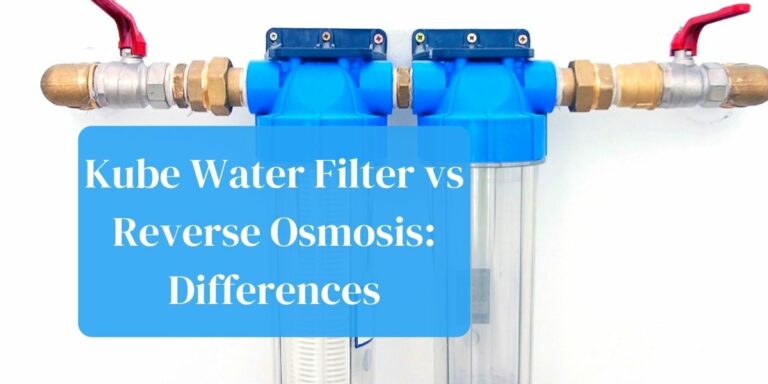In the United States and in most countries, chlorine in some form is added to the water supply to disinfect it. Chlorine is a very volatile chemical, and it can easily disrupt other chemicals and organisms, making it very effective for killing microbes.
Normal chlorinated water is safe to drink, but some applications, such as home brewing, require non-chlorinated water. And, most people don’t like the taste of chlorine in the water.
Using a reverse osmosis system could be a solution – but does reverse osmosis remove chlorine?
Does reverse osmosis remove chlorine?
The answer depends on the specific question you are asking: The process of reverse osmosis itself does not remove chlorine.
But many reverse osmosis systems that are currently on the market contain multiple stage filters, including carbon (activated charcoal) filters, which do remove chlorine before it goes into the reverse osmosis process. Additionally, any kind of water filter that has a carbon filtering stage built-in will remove chlorine.
So, the answer can be honestly answered: Yes, a reverse osmosis systems removes chlorine from water. About 98% of the chlorine added by municipal water supply is removed. The traces left in the drinking water can be ignored.
If you want to know whether reverse osmosis can remove fluoride, read on here.
By the way: chlorine itself is easy to remove. Since it’s a gas dissolved in water, simply leaving the water out uncovered will let the chlorine evaporate. It’s chloride, a chemical compound that contains chlorine, that needs to be removed by filters.
Also read: The best whole house reverse osmosis systems
Let’s dig deeper into the process of reverse osmosis.
How does reverse osmosis work?
Obviously, reverse osmosis is the opposite of osmosis! Let’s say you have a container of water with a semi-permeable membrane dividing it into two parts.
A semi-permeable membrane is a membrane or divider that allows some molecules through but doesn’t let others through. Usually, the smaller molecules can fit through, and the larger molecules don’t.
If you added a substance to one side of the membrane – say table salt – then water on one side is now “purer” than water on the other side.
At this point, a process called osmosis kicks in. Water molecules will move across the membrane until the concentration of water molecules is equal on both sides.
This is why your fingers shrivel up after a long time in the shower or pool. The water outside your body is less concentrated than the water inside, so osmosis causes water to flow out of your cells and into the pool/water on your skin from the shower.
This is nature’s way of balancing out things.
When the water molecules move from one side of the membrane to the other, there is a bit of pressure as the water moves from one side of the membrane to the other – this is called osmotic pressure.
In reverse osmosis, you’re applying pressure greater than and in the opposite direction as osmotic pressure, forcing water the other way – from the side with less concentration to the side with greater concentration.
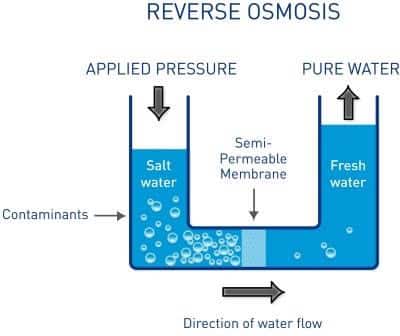
To make this work, there is a highly specialized membrane in the RO system. This membrane is damaged by chlorine, which is why RO itself can’t remove chlorine.
To make products a full solution, manufacturers add a carbon filter that the water passes through before the water reaches the RO membrane so that the chlorine is removed before it comes in contact with the membrane.
Also read: The pros and cons of reverse osmosis.
What does reverse osmosis remove?
For reference, here is a table of things that RO does effectively remove:
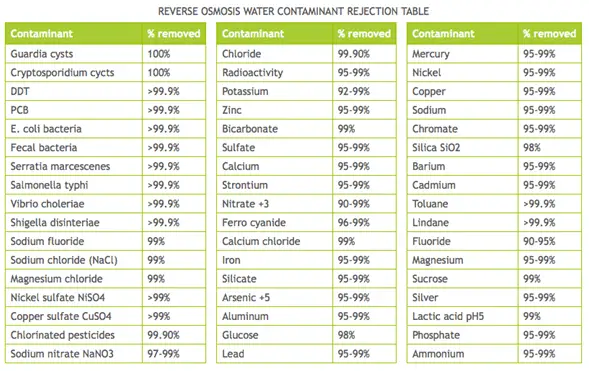
Also read our full guide on the substances that reverse osmosis does remove.
How to disinfect water with chlorine
Chlorine is added either as chlorine itself or as a chloride. The amount of chlorine varies from use to use.
Since the chlorine reacts with impurities in the water, there has to be enough chlorine to react with all the impurities. Simply dropping chlorine in water is not enough. There also needs to be enough time for the chlorine to come in contact with everything it needs to disinfect.
A good guideline provided by the Water Research Center is 0.3 to 0.5 mg of free chlorine per liter of water. It’s also a good idea to add a little extra chlorine to maintain residual disinfection for any pathogens that get into the water after the initial disinfection.
Health risks of chlorinated water
In normal quantities, drinking chlorinated water is perfectly safe – if it weren’t, it would not be added to our drinking water systems!
One side effect of chlorine is that its chemical reactions sometimes produce by-products such trihalmethanes (THMs) and haloacetic acids (HAAs), which are possible health risks.
By consuming chlorinated water which contains THMs over a prolonged period of time, there are some health risks:
- Bladder cancer: an EPA study found THMs to be responsible for 17% of bladder cancer cases. Since then, safety guidelines have been issued to prevent high enough levels of THMs to form
- Nervous system issues: Some infants and children who drink water containing chlorite(a form of chlorine) could experience effects to their nervous systems
- Miscarriages
- Breast cancer: women with breast cancer tend to have 50-60% more chlorine compounds in their fatty tissue than those that don’t have breast cancer
It should be noted that these are not risks from chlorinated water.
Rather, they are risks from chlorinated water where THMs and HAAs have formed. Not only that, but this is where the consumption was over a prolonged period of time.
Disinfecting water with chloramine
Because of the health risks associated with chlorine disinfection, many water supplies in the USA are using chloramine (a compound of chlorine and ammonia) instead of chlorine.
Chloramine is as effective as chlorine in removing contaminants, but it is harder to remove from the water than chlorine, and it still has the distinct taste and odor of chlorinated water.
Further, there are still some health risks. For example, people with skin disorders should avoid using chloraminated water.
Will my RO system have a chloramine filter?
You’ll have to check before you buy – the standard carbon filter does not remove chloramine as effectively, and for removing chloramine, you’ll need a specialized filter.
Also read:
Conclusion
While reverse osmosis itself is not effective for removing chlorine, most RO systems worth their money do have a carbon stage that effectively removes chlorine.

